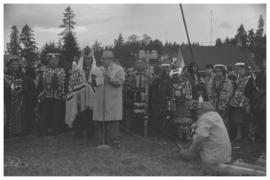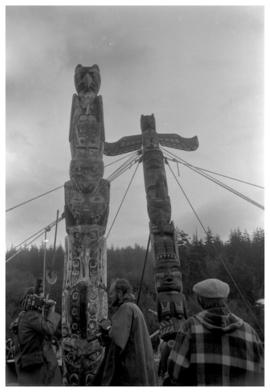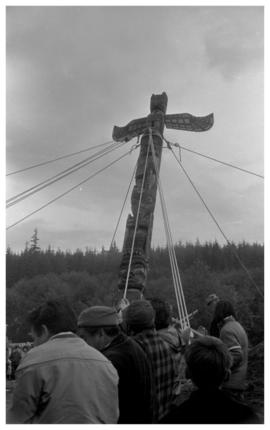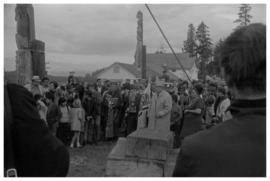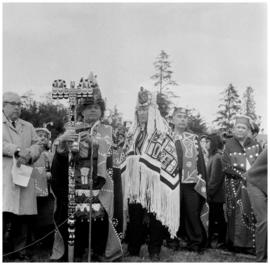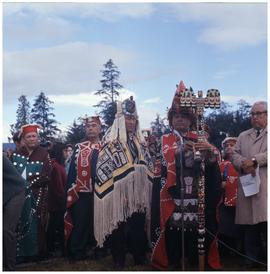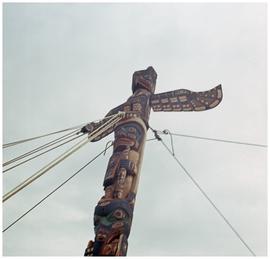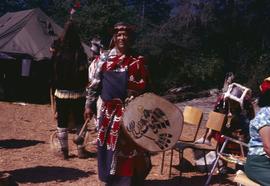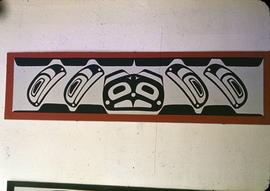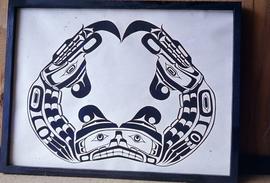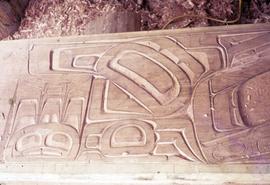Chief Thomas Hunt at Chief Mungo Martin memorial
- 25-03-06-a037936
- Pièce
- August 1970
Fait partie de Anthony Carter fonds
Chief Thomas Hunt at memorial held for Chief Mungo Martin. Hunt is wearing a frontlet that is now in MOA’s collection - object ID: 3260/68. Image from the A similar image of the same scene is printed on page 29 of Carter's book "From History's Locker," with the caption: "Under the direction of Chief William Scow the assembled chiefs of the Kwakiutl Nation come forward to make speeches in honor of the late Chief Mungo Martin."
Sans titre



